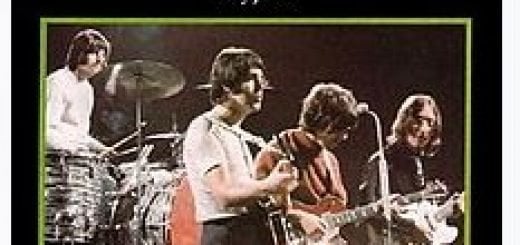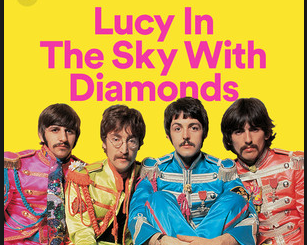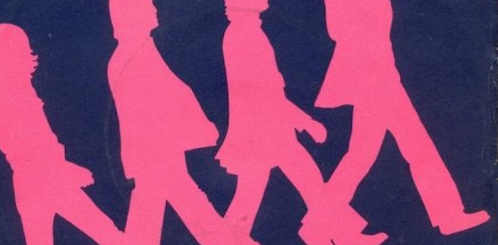The Beatles’ “I Am the Walrus” Lyrics Meaning
The Walrus is a character from a poem entitled “The Walrus and the Carpenter”, which inspired the lyrical content of this song. That particular poem belongs to a novel called “Through the Looking-Glass” (1871), which is a sequel to “Alice’s Adventures in Wonderland” (1865).
Now due to its fantastical and colorful nature, as well as other factors, the overall Alice in Wonderland saga has been strongly associated with psychedelic drugs since the 1960s, i.e. the same decade in which recreational drugs really became popular in American culture and in which this track was released. And this is important to note because apparently John Lennon was trying to capture a similar whimsical feel on “I Am the Walrus”.
But there are also a couple of other drivers that should be mentioned before attempting to analyze this song. First is that Lennon was very much tripping on acid himself when he wrote the tune. And second is that, according to the legend behind the track, he intentionally set out to compose lyrics that really make no sense just to frustrate pundits who tended to over-analyze the Beatles’ songs. So instead of falling into this same pit ourselves, we will look at this song piecemeal, trying to understand what particular phrases mean as we know they likely have no type of overall, interlinked meaning.
First Verse
The first line of the first verse, which was written specifically during one of Lennon’s acid trips, was also inspired by a police siren. It is believed to be structurally derived from The Weavers’, a mid-20th century folk band, rendition of “Marching to Pretoria”, a 19th century British army song. And concerning that aforementioned police siren, it should also be mentioned that it did in fact spur the entire creation of this track.
Then the second line, which Lennon also admitted he composed while thoroughly high, references ‘pigs running from a gun’. Now pigs is a common, derogatory colloquial term – which was especially popular during the 1960s – for police. It is believed that the singer is alluding to the idea of police getting shot at and cowering under fire. And this idea is plausible for two reasons. First, as aforementioned, the previous line was inspired by a police siren. And secondly the police are again alluded to, even more explicitly, in a likewise manner during the third verse.
Second Verse
The second verse is where it starts becoming more apparent that “I Am the Walrus”, at least at certain points, is just a hodgepodge of words. The first line of it is historically-verifiable as being a freestyle. Then the second possibly has a reference to a miners’ strike, which ended in bloodshed, that occurred in South Africa in 1946. And lastly the singer seems to acknowledge the idea that guys who let their facial hair “grow long” are perceived as menaces by the overall society.
Chorus of “I Am the Walrus”
Then the chorus begins with the singer referring to himself as the “egg man” as well as others as “the egg men”. One explanation of these statements are that they are references to Humpty Dumpty, an anthropomorphic egg character who also appears in “Through the Looking-Glass”. Meanwhile a musician by the name of Eric Burdon, who was a close friend of John Lennon’s, stated that he actually is the egg man and that his nickname was even “Eggs”. So basically, what Eric Burdon is saying is that when John mentions the egg man in the chorus, he is actually giving a roundabout shoutout to him.
In the next line of the chorus the singer states that he is also “the walrus”. He then follows up with a phrase of gibberish, which is indicative of the nonsensical nature of the song.
Third Verse
The third verse starts off with a forthright mention of a “policeman” and “policemen”. And these individuals are “sitting pretty in a row’. The singer then partially namedrops another Beatles’ song, saying that the police “fly” like “Lucy in the Sky” (with Diamonds), and he is watching “how they run”.
So given these allusions, we can conclude that yes, the aforementioned “pigs” were in fact a metaphor for police. Meanwhile “Lucy in the Sky with Diamonds” is a song that is commonly interpreted as being about LSD. So it may be that the singer is trying to insinuate that the police are on drugs, but that doesn’t necessarily seem to be the case. Rather he just seems to be making fun of them in general.
Then he concludes this particular verse by exclaiming that he’s “crying”. And it has been argued that this expression actually reflected some sort of depression John Lennon was going through at the time. It has also been put forth that this sentiment is an expression of how the Beatles were feeling as a whole, as their discoverer, manager and close friend, Brian Epstein (1934-1967), died (at the age of 32) shortly before the release of this song. In fact “I Am the Walrus” has gone down in history as being the first Beatles’ track recorded post-Epstein, so obviously the pain of his passing would still be fresh.
Fourth Verse
The fourth verse is partially based on a nursery rhyme Lennon was introduced to by a friend named Pete Shotton. The first two lines in particular are based on that poem. Meanwhile the concluding lines, though mixed with more gibberish, are sensual in nature. In fact the Beatles’ mention of an obscene “priestess” and a “naughty girl” who ‘let her knickers down’ resulted in this song being banned by the BBC.
Fifth Verse
The fifth verse makes a couple of references to British weather. And it would actually make sense if not for the fact that the vocalist proclaims that ‘getting a tan’ can be achieved by “standing in the English rain”.
Chorus 2
The chorus that follows is the same as the one prior, except that it incorporates excerpts from a Shakespeare play entitled “King Lear” (1606). And this sample does not appear as if it is meant to fit into the overall narrative of the song, as if there is any. Rather they just seem to be random musings Lennon recorded while playing with the radio dial.
Sixth Verse
He begins the sixth verse by seemingly mocking people who smoke themselves into bad health. Indeed John himself was known as being a chain smoker. Then he once again makes a reference to “pigs”. And considering what has been said earlier for simplicity’s sake this can once again be viewed as an allusion to the police. And this time around he presents them as ‘smiling’, “snide” characters. Then once again he concludes the verse by exclaiming that he’s “crying”.
Seventh Verse
At the beginning of the seventh verse he drops the phrase “semolina pilchard”. The popular understanding of this term is that it is actually an abstraction of the name Norman Pilcher. Norman Pilcher was a high-ranking detective who, succinctly put, made a name for himself by harassing British rock stars and hippies. In fact he even successfully managed to bag John Lennon on drug charges for what has been officially described as “219 grains of cannabis resin”. And this was after “I Am Walrus” was dropped. So the insinuation is that Pilcher was already notorious amongst celebrity-drug circles as a vigorous police officer. And with that being said if there is one recurring theme in this song it would be the singer’s dislike, if you will, of law enforcement.
Seventh Verse continues…
Continuing with the seventh verse, the singer states that he’s “climbing up the Eiffel Tower”, which is of course a hyperbole. Then he opines “elementary penguins singing Hare Krishna”. This was a diss against noted American philosopher and poet Allen Ginsberg (1926-1997). And what Lennon was saying is that people like him are “elementary penguins”, a term akin to semi-committed, mindless followers, who subscribe to a particular religious movement that was popular back then, “Hare Krishna”.
Then in the next line the singer namedrops the legendary writer “Edgar Allan Poe” (1809-1849). And whereas this reference has been construed in different ways, perhaps the most-feasible theory is that it is a further dig at Allen Ginsberg, who was known to have an affinity for Poe. And if that hypothesis is true, then what John is saying is something like Ginsberg’s past shoutouts to Poe were unseemly.
Outro
Then after a chorus featuring even more babble then the first, the outro commences with a group of vocalists exclaiming that “everybody’s got one”. Lennon’s personal explanation of this phrase is a bit vulgar, but what it basically boils down to is that the “one” mentioned can allude to practically anything. Then he drops the line “umpa, umpa, stick it up your jumper”, which is said to be a traditional British insult. And finally the song concludes with yet another excerpt from the reading of “King Lear”.
John Lennon misunderstood who the Walrus actually was!
Now going back to what is supposed to be the overarching theme, which is the singer proclaiming himself the Walrus, it should be noted that John Lennon later admitted that he originally misread “The Walrus and the Carpenter”. At first he perceived the Walrus to be the protagonist only to later realize, upon careful analysis, that the contrary was true. So at the end of the day, we can probably say that Lennon is not, at least intentionally, the Walrus.
However that does not negate the fact that he does go on to portray himself as sort of a villain. Or more to the general idea, he comes off as someone who isn’t afraid to be controversially critical of the world around him. And in doing so, he includes the likes of taunting police, making lewd sensual references and even writing a song while he was wasted.
So different interpretations exist as to what the Walrus actually represents. But in John Lennon’s eyes, he was apparently a character who, to some degree, wasn’t afraid to speak his mind.

Facts about “I Am The Walrus”
This is one of six songs the Beatles created for a television special they came out with in 1967 called “Magical Mystery Tour”. The track itself was released on 24 November 1967. And it is also featured on the “Magical Mystery Tour” album.
And interesting to note is that the cover art for the “Magical Mystery Tour” actually featured Lennon dressed as a walrus.

This song came out before the album itself, as it was the B-side to a Beatles’ hit entitled “Hello, Goodbye”. And it charted in both the United States and New Zealand.
A live, auditorily-modernized version of “I Am the Walrus” is featured on the Beatles’ extensive documentary DVD entitled “Anthology” (2003).
The Beatles were backed vocally on this track by 16 representatives from the Mike Sammes Singers, who back in those days were a very-active group of vocalists-for-hire.
“I Am the Walrus” has been referred to numerous times in major theatrical releases and television shows. These include the following:
- “Ferris Bueller’s Day Off” (1986)
- “Saturday Night Live” (1993)
- “The Big Lebowski” (1998)
- “The X Files” (2000)
- “The Simpsons” (2003)
And as far as the “King Lear” excerpts are concerned, there are three characters from the play which are featured – Edgar, Gloucester and Oswald. And they respectively voiced by actors Philip Guard, Mark Dignam and Joyn Bryning.
Who wrote “I Am the Walrus”?
Both John Lennon (1940-1980) and Paul McCartney are credited with writing “I Am the Walrus”. But it is Lennon who is recognized as the one who conceptualized the tune and did most of the heavy lifting (as well as singing). And the producer of the track was George Martin (1926-2016), who worked extensively with the Beatles. The story goes that when Lennon first played the song for him, Martin’s reaction was “what the hell do you expect me to do with that?” But eventually he transformed it into the musical product which we all know today.
Oasis covers “I Am the Walrus”
Since The Beatles released “I Am the Walrus” in the 1960s, many a singer and band has covered it. One of the most notable covers of this Beatles’ classic was done by English rock band Oasis.









Very interesting indeed though I wonder what became of John’s insistence that Lucy had no correlation to LSD but was a drawing that Sean had done as a child.
Julian…
“Post-Epstein” – could that also mean Geoffrey Epstein Who so ‘loved’ the children of men that he gave His life for them in a prison cell?